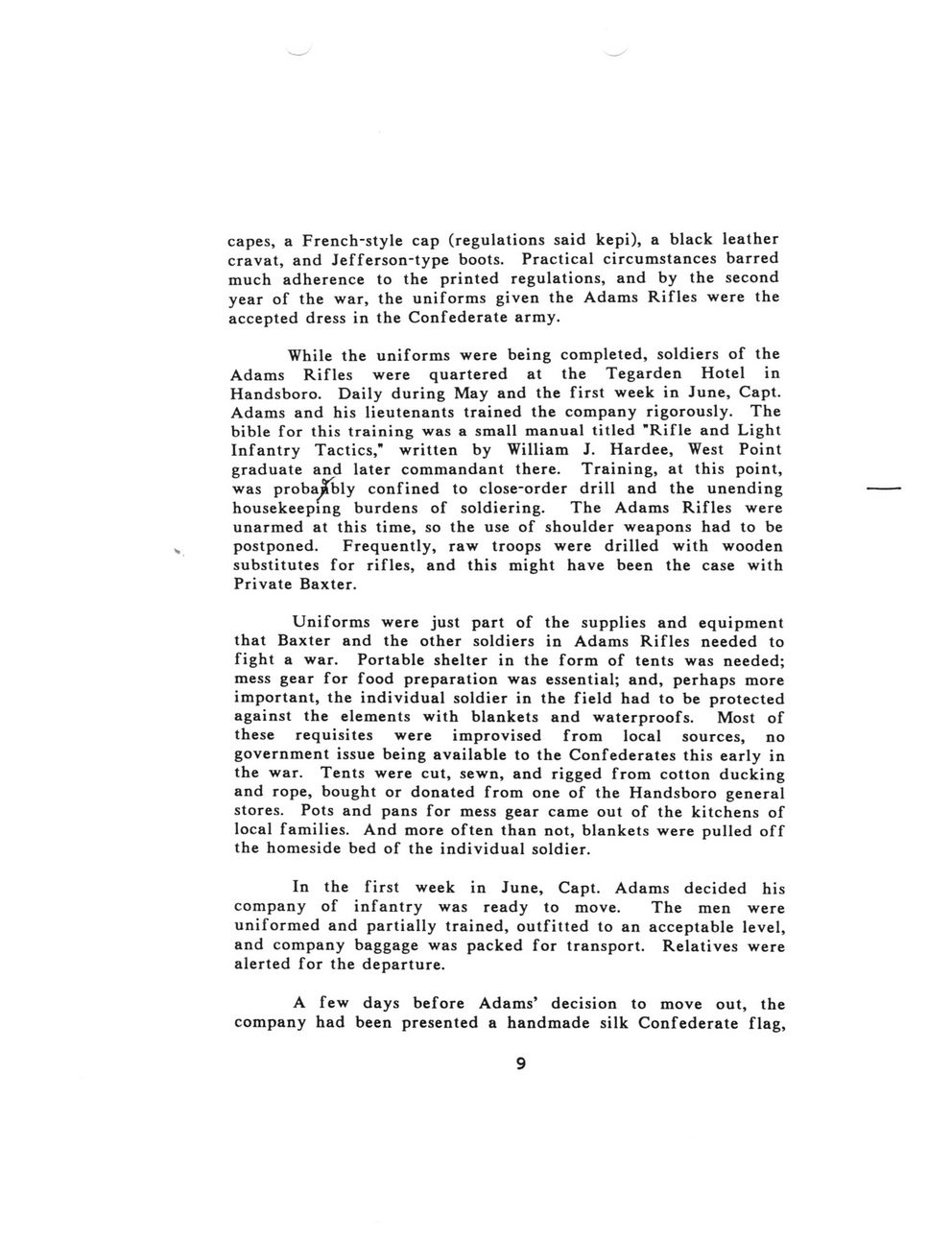This text was obtained via automated optical character recognition.
It has not been edited and may therefore contain several errors.
capes, a French-style cap (regulations said kepi), a black leather cravat, and Jefferson-type boots. Practical circumstances barred much adherence to the printed regulations, and by the second year of the war, the uniforms given the Adams Rifles were the accepted dress in the Confederate army. While the uniforms were being completed, soldiers of the Adams Rifles were quartered at the Tegarden Hotel in Handsboro. Daily during May and the first week in June, Capt. Adams and his lieutenants trained the company rigorously. The bible for this training was a small manual titled 'Rifle and Light Infantry Tactics," written by William J. Hardee, West Point graduate and later commandant there. Training, at this point, was probajTbly confined to close-order drill and the unending housekeeping burdens of soldiering. The Adams Rifles were unarmed at this time, so the use of shoulder weapons had to be postponed. Frequently, raw troops were drilled with wooden substitutes for rifles, and this might have been the case with Private Baxter. Uniforms were just part of the supplies and equipment that Baxter and the other soldiers in Adams Rifles needed to fight a war. Portable shelter in the form of tents was needed; mess gear for food preparation was essential; and, perhaps more important, the individual soldier in the field had to be protected against the elements with blankets and waterproofs. Most of these requisites were improvised from local sources, no government issue being available to the Confederates this early in the war. Tents were cut, sewn, and rigged from cotton ducking and rope, bought or donated from one of the Handsboro general stores. Pots and pans for mess gear came out of the kitchens of local families. And more often than not, blankets were pulled off the homeside bed of the individual soldier. In the first week in June, Capt. Adams decided his company of infantry was ready to move. The men were uniformed and partially trained, outfitted to an acceptable level, and company baggage was packed for transport. Relatives were alerted for the departure. A few days before Adams? decision to move out, the company had been presented a handmade silk Confederate flag, 9

Baxter, Marion Francis Marion-Francis-Baxter-Bio.-009